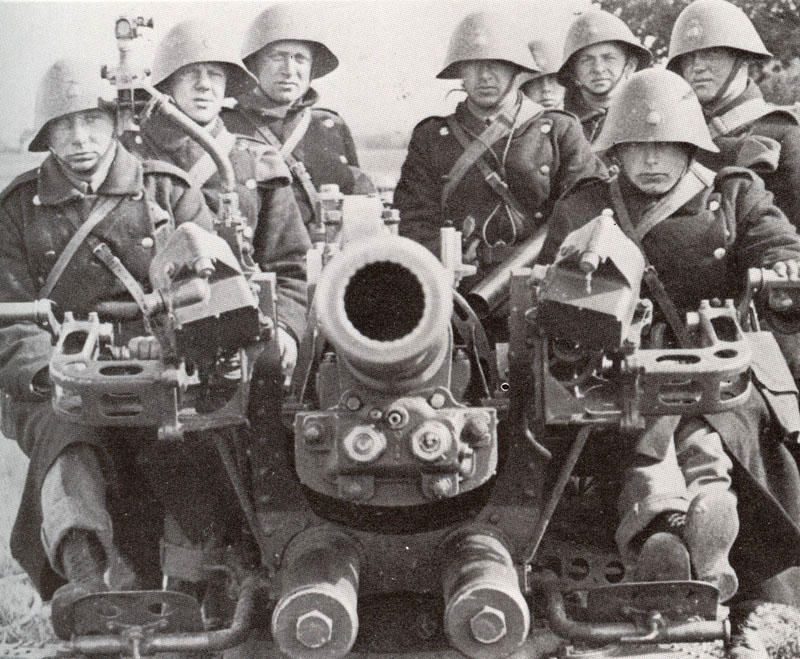Danish M1923 Helmet on:
[Wikipedia]
[Google]
[Amazon]
The M/1923 helmet was a combat helmet issued to Danish troops during the interwar period and saw service in the
 Following
Following
Second World War
World War II or the Second World War, often abbreviated as WWII or WW2, was a world war that lasted from 1939 to 1945. It involved the vast majority of the world's countries—including all of the great powers—forming two opposi ...
. It was the first helmet to be issued to the Royal Danish Army
The Royal Danish Army ( da, Hæren, fo, Herurin, kl, Sakkutuut) is the land-based branch of the Danish Defence, together with the Danish Home Guard. For the last decade, the Royal Danish Army has undergone a massive transformation of structures ...
and Navy
A navy, naval force, or maritime force is the branch of a nation's armed forces principally designated for naval and amphibious warfare; namely, lake-borne, riverine, littoral, or ocean-borne combat operations and related functions. It in ...
. The helmet was produced locally by the company A/S .
Design
The M/1923 was made from a single piece of Swedish steel and was produced in both military and civilian versions. The military version contained either an Army or Navy emblem on the front, depending upon which branch it was issued to. The army emblems were produced by prisoners at Vridsløselille Prison. From the 1930s the helmets were covered with textured grey or a light shade ofkhaki
The color khaki (, ) is a light shade of tan with a slight yellowish tinge.
Khaki has been used by many armies around the world for uniforms and equipment, particularly in arid or desert regions, where it provides camouflage relative to sandy ...
paint. The inside of the helmet was equipped with a leather chin strap and liner consisting of eight flaps. On the rear of the helmet, there is a slit allowing for a carabiner
A carabiner or karabiner () is a specialized type of shackle, a metal loop with a spring-loaded gate used to quickly and reversibly connect components, most notably in safety-critical systems. The word is a shortened form of ''Karabinerhaken'' ...
to be attached to the soldier's equipment, when the helmet was not worn.
Civilian versions
During the Second World War a number of different versions of civilian M/1923 helmets were made. They are among collectors known as the M1923/41. It is plausible that Glud & Marstrand made the M/1923/41, as they already had the machinery tooled for the production of the army helmets. The civilian version was issued to various non-military organizations such as, police, fire departments, and the press. The civilian version did not have a decal on the front, and was made from lighter steel. It had a lower quality liner and chin strap. Unlike the military version it remained in service with these groups and the Civil Defence after the war.History and usage
 Following
Following World War I
World War I (28 July 1914 11 November 1918), often abbreviated as WWI, was one of the deadliest global conflicts in history. Belligerents included much of Europe, the Russian Empire, the United States, and the Ottoman Empire, with fightin ...
the Danish government fell into line with other industrialized nations and began to equip their soldiers with steel helmets. This new trend emerged from the trenches of World War I where steel helmets greatly reduced casualties. The Danish military accepted plans for the helmet in 1923 from army Captain H. E. Johnsen and chief engineer G.A.P. Willadsen-Nielsen. The helmet saw combat during the German invasion of Denmark, Operation Weserübung
Operation Weserübung (german: Unternehmen Weserübung , , 9 April – 10 June 1940) was Germany's assault on Denmark and Norway during the Second World War and the opening operation of the Norwegian Campaign.
In the early morning of 9 Ap ...
, on April 9 1940, and very limited use with the Danish volunteers in Finland during the Winter War
The Winter War,, sv, Vinterkriget, rus, Зи́мняя война́, r=Zimnyaya voyna. The names Soviet–Finnish War 1939–1940 (russian: link=no, Сове́тско-финская война́ 1939–1940) and Soviet–Finland War 1 ...
.
Following the end of the war in 1945, Denmark gradually phased out the M/1923 in favour of the M/48 steel helmet, which was modelled after the American M1 helmet. This move coincided with many other NATO
The North Atlantic Treaty Organization (NATO, ; french: Organisation du traité de l'Atlantique nord, ), also called the North Atlantic Alliance, is an intergovernmental military alliance between 30 member states – 28 European and two No ...
members who adopted the same design. The M/1923 is unique in that it was never exported internationally making Denmark the only country ever to use it. This contrasts with other helmets of the era such as the French Adrian helmet and the British Brodie helmet
The Brodie helmet is a steel combat helmet designed and patented in London in 1915 by Latvian inventor John Leopold Brodie ( lv, Leopolds Janno Braude). A modified form of it became the Helmet, Steel, Mark I in Britain and the M1917 Helmet in ...
, which were widely distributed around the world. Moreover, this helmet's distinctive appearance makes it easily recognizable from other interwar steel helmets.
See also
*Uniforms of the Royal Danish Army
The Uniforms of the Royal Danish Army distinguish soldiers from other service members. Royal Danish Army uniforms were originally influenced by French, Prussian and Russian military traditions. However, in more recent times, its uniforms have been ...
References
;Citations ;Bibliography * * * * {{helmets Combat helmets of Denmark Military equipment introduced in the 1920s